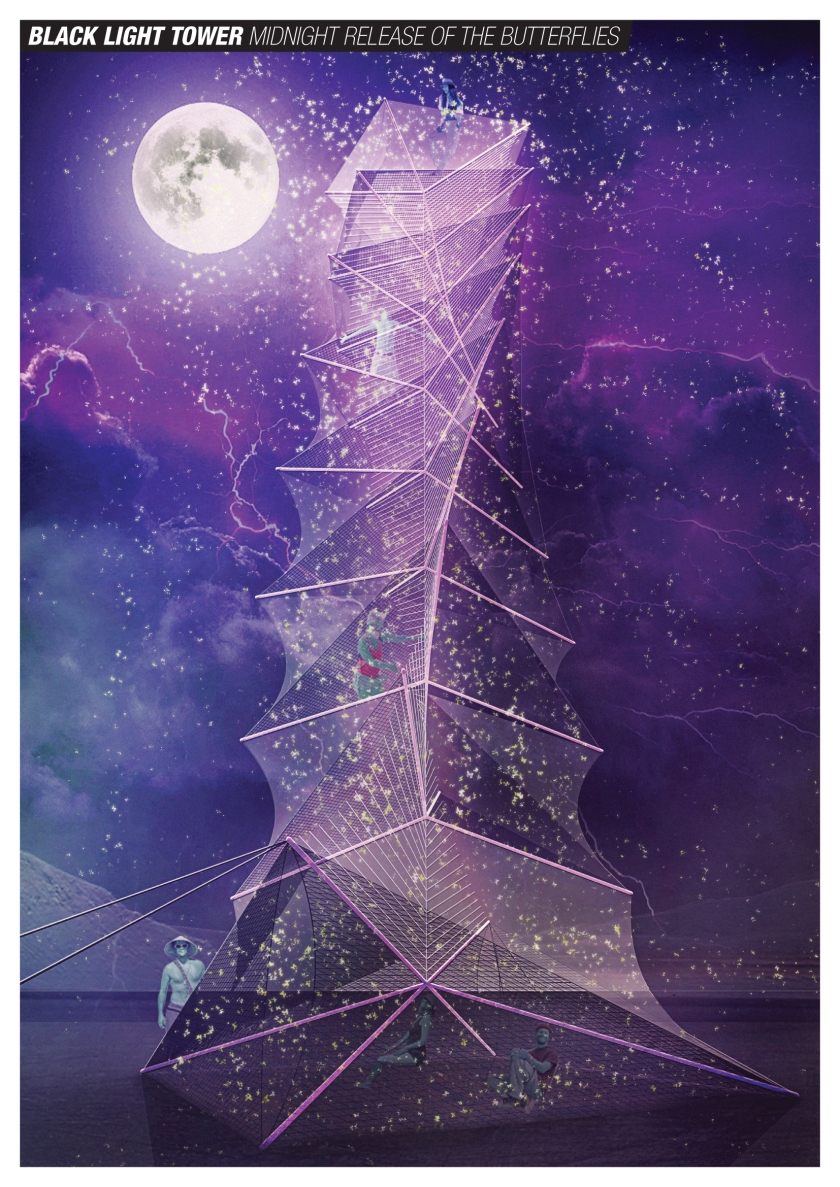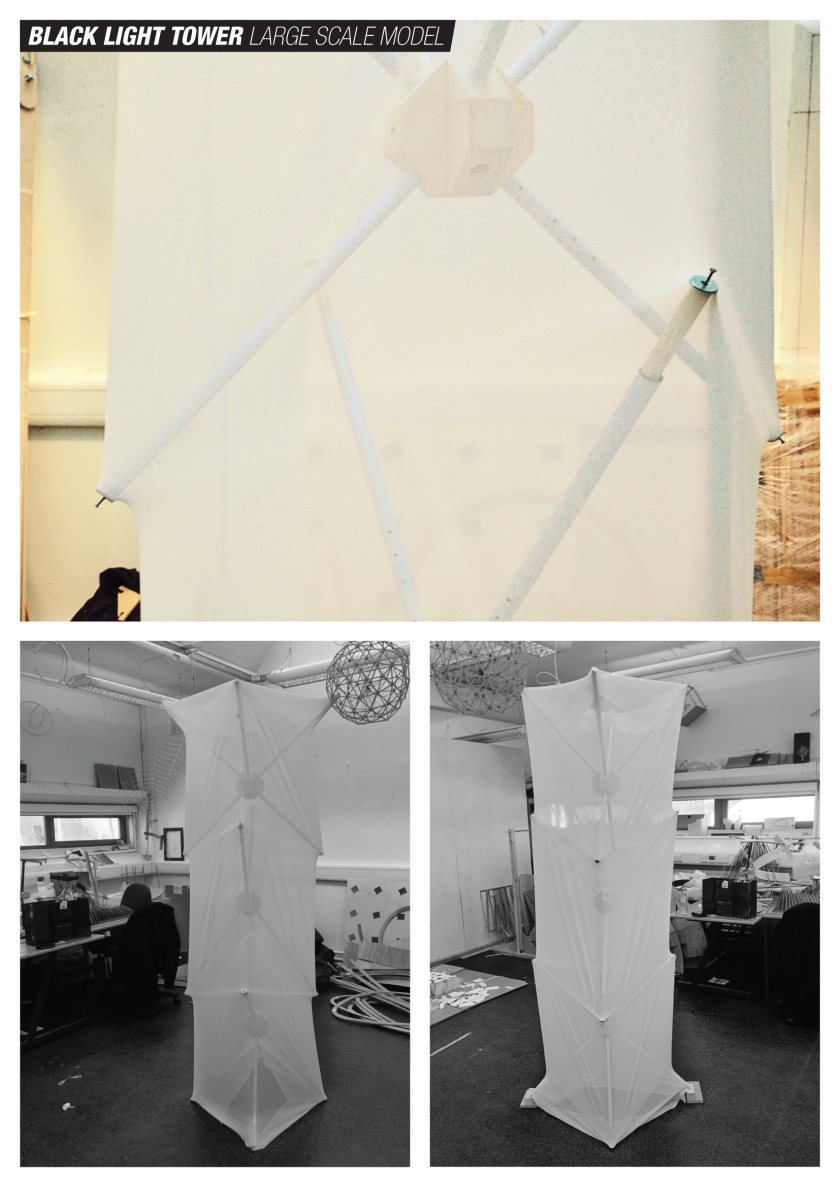My design for this year’s Burning Man Festival is titled ‘Black Light Tower.
Black Light Tower is a membrane tensegrity structure which is constructed out of 38 metal rods and a transparent structural membrane. One of the most important characteristics of the Black Light Tower tower is also one of the most important principles of Burning Man Festival – Self Reliance. Just like people of Burning Man are encouraged to rely solely on themselves and their own resources this structure is fascinating mainly because it does not use any additional support such as columns or cables, but relies solely on its own structure. The membrane almost miraculously holds the structure up and in tension. To be more precise, instead of the structure holding up the cover, cover is holding up the structure.
Tensegrity structure of this kind seems to be a perfect allegory of the Burning Man principles and a symbol of self reliance.
Black Light Tower will provide a unique experience to its users.
Its interior space is essentially a ladder which leads towards the top of the structure. From the day one the space is filled with hundreds and hundreds of butterflies which cannot escape the tower.
Butterflies then fill the tower storey by storey as the days go by. Every day the net which separates one storey from the other gets removed and butterflies can fly higher into the structure. Visitors can climb only as high as the butterflies go.
On the final day magic happens as the butterflies are symbolically released in the air, at the same time as the Burning Man Figure is set on fire. Butterflies are lit with UV light which allows the visitors to see them in their true colours, in the same way as butterflies see each other, while creating a spectacular event for the viewers’ eyes.
Immediacy is probably one of the most important values of the Burning Man culture. As written in the ten principles immediate experience means to seek to overcome barriers that stand between us and a recognition of our inner selves, the reality that surrounds us and contact with a natural world exceeding human powers.
The experience of climbing the tower will definitely make the climbers fell more alive aware of their inner selves. The night view of the Black Light Tower should be spectacular as all of the rods will be equipped with UV light which will reveal not only the magic of the floating structure under the membrane but ever changing projection of butterflies in flight under the Black Light. One of the most thrilling experiences, however, will most probably be the sublime view of the Playa from the top of the tower on the last day of the festival, that seems like its going to collapse any minute.




















































































